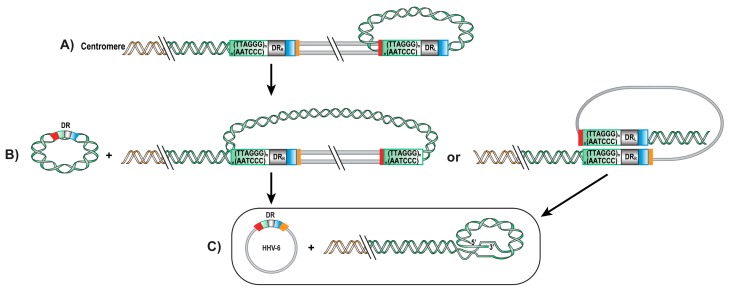Figure 2.
Possible mechanisms of HHV-6A/B genome excision from telomeres. Schematic representation of hypothetic processes of HHV-6A/B genome excision from telomeres. (A) Telomeric repeats form a t-loop in the TMR of HHV-6A/B DRL, followed by recombination and excision, resulting into a first t-loop excision: a telomeric circle and a chromosomally integrated HHV-6A/B lacking a DR but still possessing TMR sequences. (B) A second t-loop formation is made by recombination of the TMR at the end of the genome into HHV-6A/B DRR, resulting in a fully excised and circular HHV-6A/B genome containing a single DR with a single pac1, pac2, impTMR and TMR sequence. (C) Invasion of the telomeric repeats into the TMR of the DRR, resulting into a HHV-6A/B free chromosome and a full viral genome with a complete DR.

